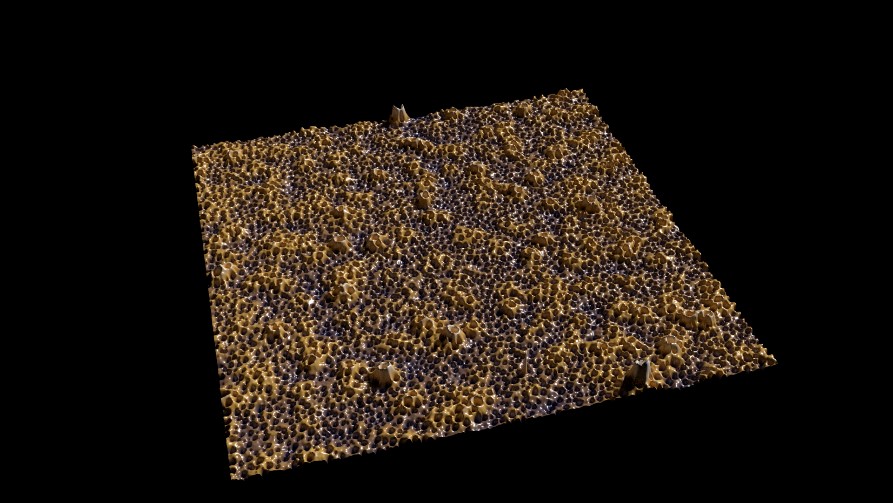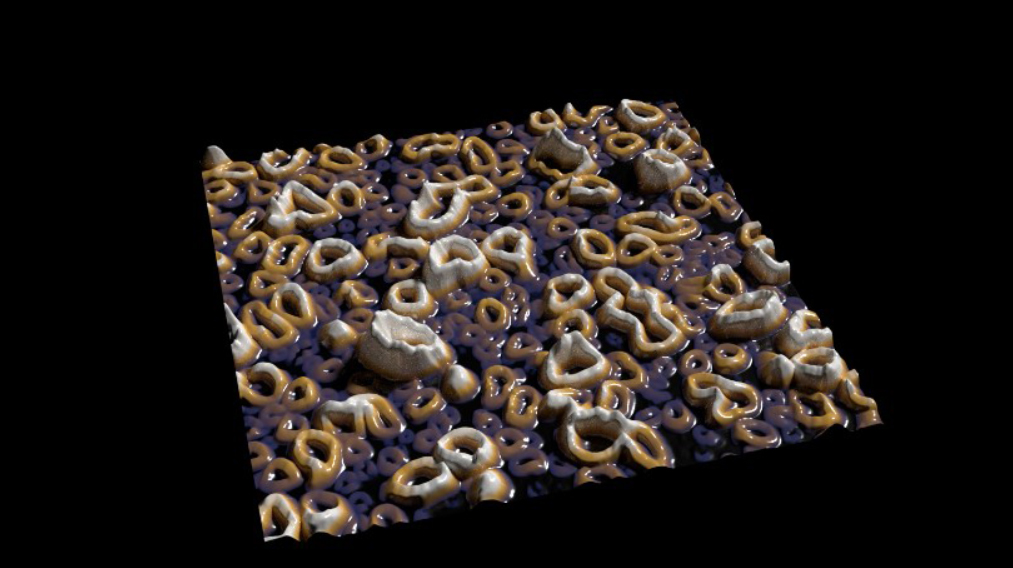ACS Appl. Mater. Interfaces 2020, 12, 14, 17100–17112
Ekaterina Makhneva*, Laura Barillas, Zdeněk Farka, Matěj Pastucha, Petr Skládal, Klaus-Dieter Weltmann, and Katja Fricke
Summary
Plasma polymerized (pp) organic polymer thin films are of interest to the biosensor development community. The polymer films that are rich in oxygen functionalities are especially attractive due to their ability to covalently attach various biomolecules. Researchers from the group of Dr. Fricke at Leibniz Institute for Plasma Science and Technology (INP) investigated the stability and functionality of pp surfaces for biosensor development.


The group studied two important criteria for the assessment of functionality of the polymer surface for biosensor applications. This included the stability of the polymer films in aqueous media and the amount of biomolecules that could be immobilized onto the surface. They compared two different pp layers deposited from 1,2,4-trivinylcyclohexane (TVC) that contains no oxygen and tetrahydrofurfuryl methacrylate (THFMA) that has a high content of oxygen and fabricated thin pp films of these monomers alone and of a 1:2 (THFMA:TVC) volume ratio mixture.
XPS analysis of the freshly deposited pp layers showed that all the films had an increased oxygen content at the surface. Water contact angle measurements of freshly deposited pp films showed that all three films were hydrophilic with similar contact angle measurements. However, after storing the surfaces for 24 hours in an aqueous media, the contact angle increased for all three surfaces, with the most significant increase seen for ppTVC.
The morphology of the deposited films was studied using a CoreAFM from Nanosurf. The freshly deposited polymer films had a smooth appearance with the ppTHFMA-co-TVC blend having a slightly higher surface roughness than the single monomer surfaces. After storage for 24 hours in water, all of the surfaces had significant morphological changes. The ppTVC surfaces had ring like structures while the ppTHFMA surfaces had pinhole like features. The most interesting and dramatic changes were observed in case of the ppTHFMA-co-TVC layers with large donut-like structures seen all over the surface. Comparison of the amount of antibodies that were immobilized on the three surfaces found that the ppTHFMA-co-TVC had the largest amount of antibodies immobilized. Considering the similar chemical functionalities found at the surface of pp films, the reason for such high load of antibodies at the ppTHFMA-co-TVC surface could be an increased total surface area on the THFMA-co-TVC films. The formed donut-like structures of ppTHFMA-co-TVC films acted as a beneficial pattern for more efficient immobilization of biomolecules.
The results from this study showed that atmospheric pressure plasma-induced polymerization is a powerful method for the preparation reactive surfaces for immobilization of biomolecules with a wide range of applications in the biological field. More details about this study can be found at https://pubs.acs.org/doi/10.1021/acsami.0c01443.

